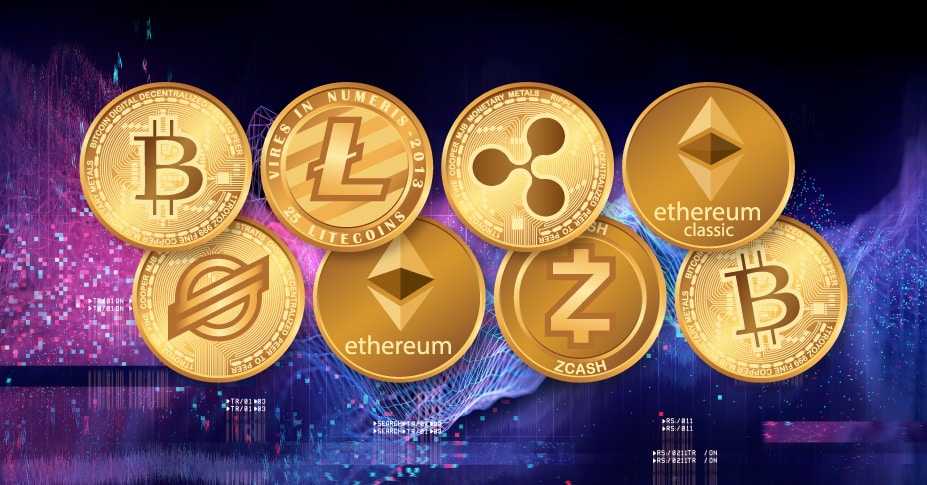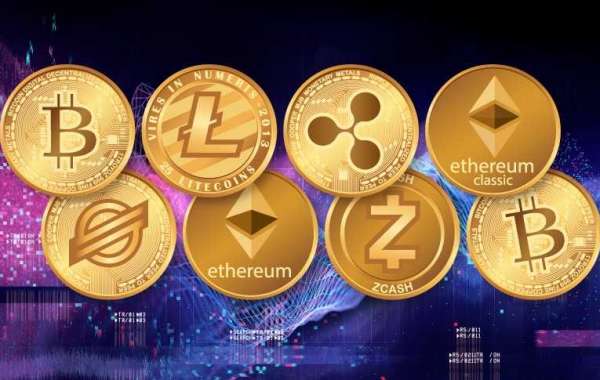click here to join the blue idea network's social media network
From the point of view of organized societies, wealth, in any form, is not just a buying tool. It is a means of power and the exercise of power, with money, with land, with animals. Unbeknownst to them, they bequeathed to us the core of the current economic system, capital.
The need that the currency has created over the centuries - why, of course, how could small transactions with animals or precious metals be possible - has led to today, that the "currency", paper or not, is a non-negotiable presumption of power, a completely intangible concept, trust, and is typically captured in digital form. When we order the bank to transfer money to a recipient, the bank does not organize remittances with our own amount. It removes it from our account and transfers it digitally to that of our order.
According to a study on the global economy, published last year on the popular American shopping site How Stuff Works, of the total world wealth, in physical form there is only 8%! The remaining 92% are simple numbers in the banking software! That is, in the hypothetical scenario, where the money stored in world wealth would have to be taken over by the banks as a whole, the planet's economy would "hit" an irreparable crash! Capital controls in the period of the economic crisis had exactly this goal. To protect the banks' reserves from a mass withdrawal order, which could not be served in physical form of money.
They are measured on paper
There is, therefore, a global capital, stored in money, which is nothing more than black spots on the white background of each bank's database. Like the phone numbers on the agenda of each of us. Amounts large, or less large, listed next to names. This portfolio is the heavy artillery of any financial institution. Stored in a strict, desirably inviolable software, protected as a pupil of malicious attacks. These are the fortunes of this and that, measured on paper, since when we talk about the millions of euros or dollars of those at the top of the Forbes list, we do not mean bathtubs or pools full of banknotes, where the rich of the planet swim, as others Scrooge of our childhood ...
So the money, the currency, the purchasing power of each country, the means of transaction of its citizens is already in digital form, registered in the closed source software of the banks, which are also responsible for the storage and management of this software. This system, the financial one, was conceived in its form of operation centuries ago by the crusaders and the societies of the planet have been following it ever since.
The beginning of bit gold
In late 2005, Nick Szabo, a computer scientist, lawyer and cryptographer, posted a joint statement and a proposal on his personal website. He said that the money we already use and based on our trust in a third party - a government or a bank - is a condition that in practice has created problems, such as inflation, with the example of the turbulent fall of currencies in 1944, in wartime, which led to the production of inflation money with minimal value.
He went on to say that, unlike currency, precious metals, due to their rarity and extremely high production difficulty, have non-negotiable value, independent of trust in government or a bank, and are certainly not at risk of inflationary attacks. But how can you use them in small daily transactions? How can you use a gold bar instead of natural or plastic money in one of your transactions? So he suggested bit gold, a digital cryptocurrency (so named because encryption is used to create and use it), which could easily be produced by each of us, but should be available in relatively limited chunks so that lose its value.
Szabo's proposal remained in theory until the centralized management model of the state economy came in 2008 to challenge a mysterious signature, under a few pages (just 8) research, entitled Bitcoin: A Peer-to-Peer Electronic Cash System "published in a scientific journal.
A simple picture
In the first days of 2009 a strange buying tool "sees the light of the digital world". It is round, shiny, well-designed, it looks like the euro, but in the center there is the letter "B". The most important of all? It is a simple image on computer screens. Absolutely intangible. And it aspires to replace tangible money.
Click here to start trading cryptocurrency easily
Mr. Satoshi Nakamoto, who signs the survey, presents a network of transactions, without the mediation of a bank database. Transactions are made directly between interested parties using a digital currency, a cryptocurrency, bitcoin. In other words, Nakamoto presents an open source payment and digital currency system for managing this particular decryption method. Bitcoin is a transparency, open to all digital register, in which any other customer can see balances and transactions, made at any time. In fact, just as the internet decentralizes information, so bitcoin decentralizes money, rejecting all forms of intermediaries. It is considered inviolable, a fact that ensures the blockchain technology with which it is produced and developed.
It is noted that as it turned out afterwards, the famous creator of bitcoin, Satoshi Nakamoto is a person - a ghost, whose details were never revealed. It remains unknown what gender it is, what age, what nationality είται It is ignored even if it is a person or a group. From time to time, rumors "saw" the unknown creator in the faces of famous developers, information that, however, was never confirmed.
So what did the mysterious signatory achieve? With the help of blocks (bricks) and the application of "blockchain" technology (chain, consisting of bricks) created a system of transactions, directly from user to user (without intermediaries, eg bank), which could easily and safely to be verified. The database of the bitcoin system does not exist in a central banking node, which is guarded in every way by prying eyes, but it is open and available to anyone interested. In fact, every user of the network of this chain has on his computer a copy of all transactions, a fact that revealed the risk of data interception or alienation, since a would-be hacker should not "break" the database on all computers, where it is "hosted ».
How does blockchain work?
Each digital block (block) is used as a "notebook" to record our transactions.
The three basic elements that characterize each "notebook" are a) the information we want to record (transaction), b) a distinctive unique number (multiple digits), which we have given to the specific "notebook" to distinguish and c) a distinctive unique number (multiple digits) of the immediately preceding "notebook", which we had filled with our previous transactions (it means that in the first, the virgin block - "notebook" of the chain, this last number does not exist).
Thus, a neat chain is created with interdependent blocks, as the next one indicates exactly what its previous one was. Each block - "notebook" has a capacity of one megabyte (holds about 2,000 transactions). Once this is filled, someone from the user chain opens a new one.
For each new block, which is attempted to be added to the chain, ie for each new "notebook" that opens, not only do all the users - participants in the chain network, become, but the information is registered and not confirmed - transactions that are registered and do not have approves, in order for the "notebook" to be considered valid and to be included in the chain.
How is this done? Suppose Konstantinos Ch. - a member of the blockchain bitcoin network - wants to make a transaction and record in a new block - "notebook" that opens, in which he behaves primarily and especially the number of the last in the series "notebook" (we said that each of us has at his disposal) all the elements of the chain). What he has to do now is find and "name" the new "notebook" with the distinctive number, and then continue all the users of the system for the new block he wants to add to the chain.
Then, the majority of users (51%) will have to cross the validity of the transaction of Konstantinos X. their computer program) the number with which Konstantinos Ch. has "christened" it - and to accept it as part of the rest of the chain. In this case, then, the first one who correctly calculates the number of the new block, receives as a reward for his help in the transaction a number of bitcoins. This is called "mining" ("mining") and to achieve its goal (locating the number) it takes about 10 minutes.
If you are wondering how it is possible for 10 minutes to remain stable with a global community of user researchers gradually increasing - as more and more people around the world enter the "game" of cryptocurrency collection - the Nakamoto system has it watch this too. In the chain of blocks there is a degree of difficulty, which increases with the entry of new users, so it adjusts the detection time and shields the chain even more! However, in any case this time does not exceed ten minutes.
Through such a participatory process, it is rather difficult to impossible for the majority of users of a blockchain network to "pass" a fake transaction, with which a potential intruder would attempt to alter the bitcoin chain.
Pizzas, the first purchase
About a decade ago, a young American user appeared on an online forum discussing the new "fruit", the bitcoin cryptocurrency, who in a post then offered tens of thousands of bitcoins to anyone who supplied him with two pizzas. A farmer on the other side of the American continent responded to his request, who actually ordered two pizzas in the young man's name, costing about $ 30, and collected the cryptocurrencies. In the following years, the farmer realized that this offer had paved the way for paradise. to climb uncontrollably, with the result that, on 12/17/2017, one bitcoin was sold instead of $ 20,000!
But, the greater the degree of difficulty in "mining", the greater the requirements for the pc of each user. What once, in the "birth" of bitcoin, one could achieve with a laptop or even a mobile phone with internet access, is now a fairy tale of the past…
The financial demands on processor and graphics card power supply are skyrocketing… and the privilege of "mining" now belongs to "warehouses" or otherwise "farms" of computers of extremely high cost and capabilities, which "run" night "number divination" programs of numbers, consuming huge amounts of energy.
The "game" has gone out of the hands of individual users and has gone to colossal bitcoins companies, but also to the "mining pools", in large user communities, where everyone participates in the common goal with their own processor (which has been upgraded as much as he's pockets) and claims a share of the cryptocurrencies generated depending on his contribution to the common cause. As for the production "farms", most of them are in China.
It is estimated that more than 70% of bitcoins are produced at the headquarters of the yellow race, where electricity is significantly cheaper and the processors, which are very expensive for the rest of the world, are in their place of production. In fact, several of these companies have been set up next to hydroelectric plants, as the surplus electricity that such factory owners find is not worth transporting away, instead of being lost on the… route, is available at these nearby miners' "farms". instead of a low price. So, the benefit is mutual.
Investment or gambling?

The "mining" in the first appearances of the cryptocurrency was paid with 50 bitcoins. Products of the time and as the supply of "hunters" of the hidden number increased at an uncontrollable rate, the reward of the winner in cryptocurrency was cut. The 50 bitcoins of 2009 became 25 in 2013 and 12.5 in 2017. In the current 2021 the reward will be reduced to 6.25 bitcoins and based on this model, in the period 2029-2032 the number of reward cryptocurrencies will be 1.56 , in 2033 it will fall to 0.78 and in 2081 each block is estimated to give 0.00019. The point is that in a year, when the reins will probably have taken our three grandchildren, in 2140, a block will give the last infinitesimal fraction of bitcoin and there the production of the cryptocurrency will end, completing the cycle of 21,000,000 pieces which was planned from the beginning to be put into circulation, so that in the long run inflationary tendencies do not develop and lose its value.
Suspicious transactions
The truth is, of course, that the leaping increase in the value of this digital currency makes a special impression, and in fact in a short period of time. How come an intangible, digital cryptocurrency on a day in July 2010 equals $ 0.008 and just 9 months later (April 2011) a bitcoin equals one dollar?
(As for the current exchange rate… the difference is now dizzying. At 17:01 on Monday, January 4, 2021, a bitcoin cost $ 31,935,805!)
The rise in the value of bitcoin is interpreted. As the currency was (and remains) generally anonymous and the user and trafficker invisible to banks and governments, suitable for suspicious transactions. Bitcoin became the favorite currency of dealers, while through large tributes approved
Click here to start trading cryptocurrency easily
click here to join the blue idea network's social media network













